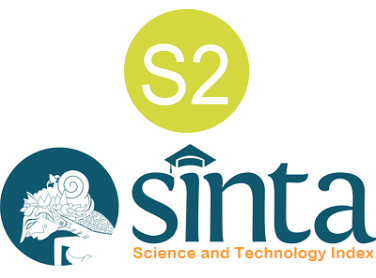Pergeseran Konsepsi Kuburan Pada Masyarakat Hindu Bali: Antara Tantra, Calon Arang, dan Wacana Populer
DOI:
https://doi.org/10.37329/jpah.v9i1.3159Keywords:
Charnel Ground, Calon Arang, Balinese Hinduism, Balinese ParadigmAbstract
The charnel ground (sĕma/setra) is one of the locations regarded as sacred by the Balinese Hindu community, serving as a center for various religious rituals, ranging from Pitra Yadnya to less common rites such as Ngĕreh. This sacredness is illustrated in the Calon Arang performance, where the charnel ground is featured as one of the key spaces, in addition to being a significant element in the Calon Arang text. On the other hand, various media, from films to information found on the internet, often depict charnel grounds in a negative context. Observing these two contrasting portrayals, this research is aimed at investigating the differences in perception regarding the meaning of charnel grounds from the two aforementioned perspectives, focusing on the discourses surrounding charnel grounds in Calon Arang (both in the text and in performance contexts) and comparing them with narratives disseminated through popular media, while analyzing these through the lens of Balinese Hindu theology rooted in Tantric teachings. The research method employed is a semiotic approach with a descriptive qualitative framework. The findings reveal that contemporary Balinese Hindus tend to hold a negative image of charnel grounds, which is inconsistent with the theological teachings of Hinduism. This shift in perception is largely influenced by widespread information from various popular media, such as social media and the internet, which often portray charnel grounds negatively. As a result, there is a dissonance between the values taught in the Śāstra and the general public's views. Understanding this shift becomes crucial in preserving the theological values of Hinduism amid the flow of digital information. Hence, this study highlights the urgency of awareness regarding this perceptual change and the need for concrete actions to uphold the integrity of religion and culture in Bali.
References
Ariswandani, N. M. (2017). Peranan Pemerintah Dalam Penyelesaian Sengketa Pelarangan Upacara Kematian Di Setra Banjar Yangapi. Jurnal Magister Hukum Udayana, 6(2), 172-185
Arniati, I. A. K., Sukarma, I. W., Wahyuni, I. A. S. (2019). Nilai Moral Penanaman Ari-Ari Di Setra Pada Desa Kedisan Kecamatan Kintamani Kabupaten Bangli. Jurnal Penelitian Agama Hindu, 3(2), 149-157.
Arsini, N. W., Atmadja, N. B., Purnawati, D. M. O. (2016). Relief Bima Swarga Kuburan Desa Pakraman Buleleng, Bali dan Potensinya Sebagai Sumber Pendidikan Karakter Dalam Pembelajaran Sejarah. Widya Winayata: Jurnal Pendidikan Sejarah, 4(1), 1-15.
Anggriani, N. K. Y. (2018). Tradisi Panyambleh Kucit Butuan Dalam Upacara Macaru Sasih Kelima Di Ulun Setra Desa Pakraman Batuyang Kecamatan Sukawati Kabupaten Gianyar. Jurnal Penelitian Agama Hindu, 2(2), 517-522.
Blom, J. (1939). The Antiquities of Singasari. Leiden: Burgersdijk & Niermans.
Eliade, M. (1969). Yoga: Immortality and Freedom. Princeton: Princeton University Press.
Feuerstein, G. (1998). Tantra: The Path of Ecstasy. Boston & London: Shambala Publications.
Goris, R. (1986). Sekte-Sekte di Bali. Jakarta: Bhratara Karya Aksara.
Liliweri, A. (2018). Paradigma Penelitian Ilmu Sosial. Yogyakarta: Pustaka Pelajar.
Pitana, I. G. (2020). Modernisasi dan Transformasi Kembali ke Tradisi: Fenomena Ngaben di Krematorium bagi Masyarakat Hindu di Bali. Jurnal Kajian Bali (Journal of Bali Studies), 10(2), 351-374.
Santoso, S. (1975). Sutasoma: A Study in Javanese Wajrayana. New Delhi: International Academy of Indian Culture.
Soelistyanto, B. (1985). Pengaruh Tantrayana di Kawasan Nusantara. Berkala Arkeologi, 6(2), 48-60.
Suastika, I. M. (1997). Calon Arang dalam Tradisi Bali. Suntingan Teks, Terjemahan dan Analisis Proses Pem-bali-an. Yogyakarya: Duta Wacana University Press.
Suwardani, N. P. (2015). Pewarisan Nilai-Nilai Kearifan Lokal Untuk Memproteksi Masyarakat Bali Dari Dampak Negatif Globalisasi. Jurnal Kajian Bali (Journal of Bali Studies), 5(2), 247-264.
Witari, I. G. A. S. H. D., Griadhi, I. K. W., & Parwata, A. A. G. O. (2013). Sengketa Tanah Setra Dan Penyelesaiannya (Studi Kasus Sengketa Banjar Adat Ambengan Dengan Banjar Adat Semana Ubud Kabupaten Gianyar). Kertha Desa, 01(02), 1-5.
Wayman, A. (1977). Yoga of Guhyasamājatantra: The Arcane Lore of Forty Verses. Delhi: Motilal Banarsidass.
White, D. G. (2000). Tantra in Practice. Princeton & Oxford: Princeton University Press.
Wirawan, K. I. (2018). Calon Arang: Ajaran Tersembunyi di Balik Tarian Mistis. Denpasar: Bali Wisdom.
Wirawan, K. I. (2019). Karauhan & Ngiring: Kajian Teologi, Psikologi dan Etnografi. Denpasar: Bali Wisdom.
Yudiantara, P. (2019). Ilmu Tantra Bali: Memetakan Ajaran Spiritual Para Leluhur. Denpasar: Bali Wisdom.
Zoetmulder, P. J., & Robson, S. O. (1995). Kamus Jawa Kuno Indonesia. Terjemahan Oleh: Darusuprapta dan Sumarti Suprayitna. Jakarta: Gramedia Pustaka Utama.
Downloads
Published
How to Cite
Issue
Section
License
Copyright (c) 2025 Komang Indra Wirawan

This work is licensed under a Creative Commons Attribution-ShareAlike 4.0 International License.
An author who publishes in the Jurnal Penelitian Agama Hindu agrees to the following terms:
- Author retains the copyright and grants the journal the right of first publication of the work simultaneously licensed under the Creative Commons Attribution-ShareAlike 4.0 License that allows others to share the work with an acknowledgement of the work's authorship and initial publication in this journal
- Author is able to enter into separate, additional contractual arrangements for the non-exclusive distribution of the journal's published version of the work (e.g., post it to an institutional repository or publish it in a book) with the acknowledgement of its initial publication in this journal.
- Author is permitted and encouraged to post his/her work online (e.g., in institutional repositories or on their website) prior to and during the submission process, as it can lead to productive exchanges, as well as earlier and greater citation of the published work (See The Effect of Open Access).
Read more about the Creative Commons Attribution-ShareAlike 4.0 Licence here: https://creativecommons.org/licenses/by-sa/4.0/.








